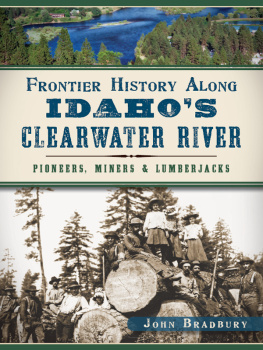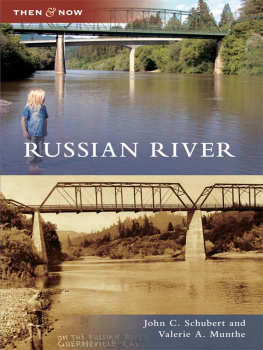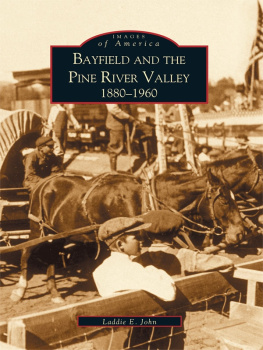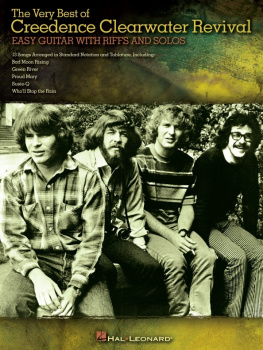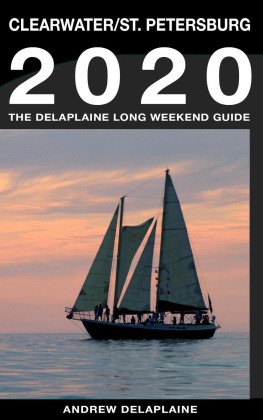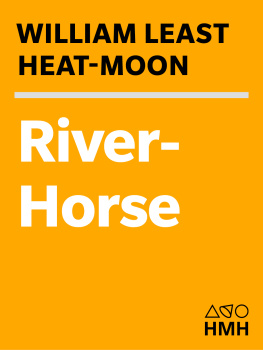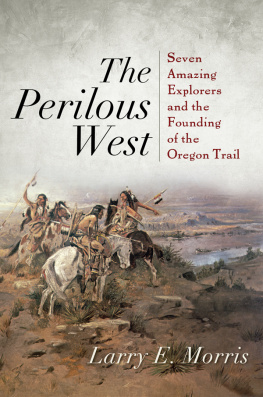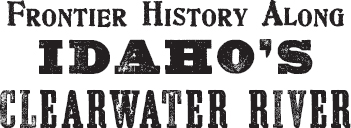

Published by The History Press
Charleston, SC 29403
www.historypress.net
Copyright 2014 by John Bradbury
All rights reserved
Front cover: Load of logs at Peckham Sawmill at Fraser. Courtesy of Marjie Johnson, Viola Molloy Collection.
First published 2014
e-book edition 2014
ISBN 978.1.62585.245.8
Library of Congress Cataloging-in-Publication Data
Bradbury, John H.
Frontier history along Idahos Clearwater River : pioneers, miners and lumberjacks / John Bradbury.
pages cm
Includes bibliographical references.
print edition ISBN 978-1-62619-709-1
1. Clearwater River Valley (Idaho)--History. 2. Frontier and pioneer life--Idaho--Clearwater River Valley. 3. Clearwater River Valley (Idaho)--Race relations. 4. Pioneers--Idaho--Clearwater River Valley--Biography. 5. Clearwater River Valley (Idaho)--Biography. I. Title.
F752.C62B73 2014
979.685--dc23
2014036061
Notice: The information in this book is true and complete to the best of our knowledge. It is offered without guarantee on the part of the author or The History Press. The author and The History Press disclaim all liability in connection with the use of this book.
All rights reserved. No part of this book may be reproduced or transmitted in any form whatsoever without prior written permission from the publisher except in the case of brief quotations embodied in critical articles and reviews.
To my grandparents John T. and Viola Fosster Molloy. They pioneered the Clearwater in the early days with dignity and hard work.
CONTENTS
ACKNOWLEDGEMENTS
My thanks to Lewiston lawyer Mike McNichols, who suggested I write an article about Idahos first courthouse at Pierce City for the state bar magazine. That article sparked my interest in the history of the Clearwater and prompted me to write a series of articles that the Clearwater Tribune graciously agreed to print to celebrate Clearwater Countys centennial in 2011. I especially thank the readers of those articles who asked me when I was going to write this book. I probably wouldnt have written it without their encouragement.
Jay Kessenger, a former Latter-day Saints bishop, graciously agreed to cheek the accuracy of my account of the Mormon theology and history. I am very grateful. Any mistakes are due to not listening as closely as I should have.
Thanks also to Randy Smith, the reference librarian at the old Lewiston Library, who knows his stuff and understands that the ability to research through easy and regular access to the local history books and documents is an essential resource of any library worth its salt.
I am also grateful to Bernice Pullen of the Clearwater Historical Society Museum at Orofino, Mary White Romero and Laura Feucht of the Nez Perce County Historical Society Museum at Lewiston and Everett Martin of the Weippe Hilltop Heritage Museum, who were so generous with their time and helpful with documents and photographs.
My thanks also to John Vorous of Wasems Photo Shop, who patiently walked me through the labyrinth of photo management. But for him, this book would have no photographs.
My sister, Marjie Johnson, and my friend Jim Bradford agreed to read and critique my drafts, and the book is better for it. Its shortcomings are mine.
Finally, thanks to Lewiston historian Steve Branting for his encouragement and putting me on to The History Press.
INTRODUCTION
The year 1860 was a perilous time in the Clearwater. It hadnt always been so. In 1806, the Nez Perce had welcomed and helped Meriwether Lewis and William Clark and their Corps of Discovery. Thirty years later, they welcomed Presbyterian missionaries Henry and Eliza Spalding to Lapwai Creek on the Clearwater River, and the Cayuse and Walla Walla tribes welcomed their colleagues Marcus and Narcissa Whitman to their mission at the mouth of Mill Creek on the Walla Walla River
As time passed, the tribes realized that their role as the host and the whites role as guests were becoming blurred. The Spaldings were telling the Nez Perce that they must give up their hunting and gathering ways. Only as farmers could they devote the time it took to become faithful Christians. And it would be the Spaldings, not the Nez Perce, who made the rules and punished those who violated them. The Whitmans were welcoming the Oregon Trail pioneers to Fort Walla Walla as they passed through on their way to farm what had been Indian land in the Willamette Valley.
Two events triggered the blood that would soon flow. In the summer of 1847, the Oregon Trail sojourners brought a virulent strain of measles to the Cayuse and Walla Wallas. The Cayuse then tried to stop the deaths by killing the Whitmans and several other people at the mission. Several military encounters followed. By the time the virus had worked its way and the United States Army had waged its battles, about 80 percent of the Cayuse were dead.
Then in 1855, Washington territorial governor Isaac Stevens made it clear that the whites would determine who got what land. Stevens forced a treaty on the Nez Perce, who kept most of their traditional hunting and fishing grounds, and another treaty on the Cayuse, Palouse, Walla Walla, Umatilla and Yakima tribes, who were forced off most of their fishing and hunting grounds. When General Oliver Howard refused to renegotiate the reservations boundaries, the Yakima War followed, and the tribes were fought into submission.
It was into this cauldron of bitterness and distrust that the unwanted and uninvited trespassers came. They were the free-spirited miners who were always moving on to the next diggings to try to make one days dream the next days reality. They were the first white wave into Indian Country, but they didnt want the Indians land, they wanted gold. They would leave as soon as a more promising prospect came along.
The hardworking Chinese miners had left the grinding poverty and random cruelty in China for America with the hope of mining enough gold to be able to return to a decent life in the land of their ancestors. They would come into claims as the white miners were leaving for the next diggings. They found gold but discovered that random cruelty and violence had not been left behind. Then came the settlers who were chasing their dream of the free land promised by the Homestead Act only to find that the Nez Perce Reservation was in the way. Then came the intrigue and treachery with the stated purpose of civilizing the Indians and the real purpose of taking their land. The government then took their land. War followed.
Few people know that the plot to create the Idaho Territory was hatched at Oro Fino. The struggle for statehood lasted for twenty-seven years. That produced an entirely new cast of characters. The actors in this drama were as vividly colorful as vivid can get and took chicanery and double dealing to a whole new level.
The southern sympathizers from the border states had come west rather than fight for the Union army. They would, as the saying goes, vote for a yellow dog if it was a Democrat. The Mormons came west to escape violence, persecution and government interference in their religion, only to find in their new home that one Republican administration after another was penalizing them for practicing their faith. They were a solid Democratic voting block.
No territory would be admitted to the Union as a state unless its dominant political party was the same as the presidents because the president didnt want a new state casting electoral votes for his opponent. The territorial fathers made it their business to see that the Mormons couldnt vote so they could present Idaho as a Republican state. But there was a surprise in store for them.
Next page
